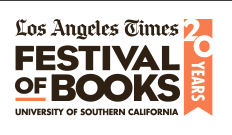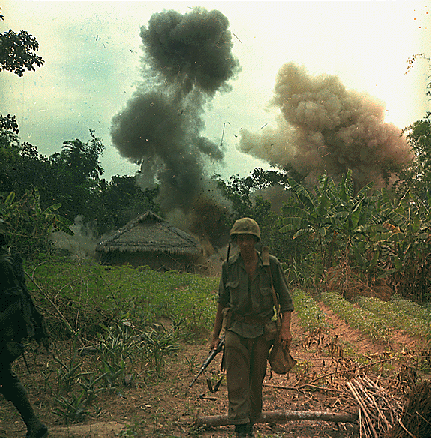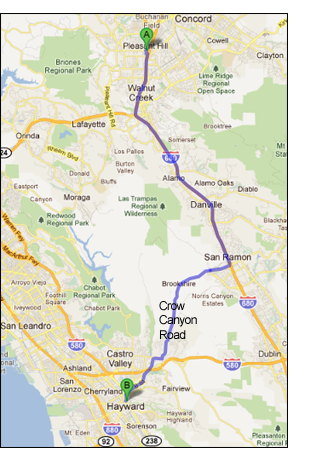 Hi, I’m Larry J. Dunlap, and I’m introducing my memoir BAND, memoir of A Naked Car Thief. I’ve been writing since the late seventies when I was in the business side of music. I did artist reviews and a cartoon strip for local music magazines then. Wrote my first story, a science fiction tale about built around a play-by-mail space empire game I was addicted to about then, too. I began professional technical writing after I’d gotten involved in technical training, eventually writing for Fortune 100 companies on contract. In recent years as the press of professional life lessened, I have returned to something I knew I’d have to do before embarking on any other authorial projects, a remembrance of my transition from a young Midwestern man/boy dreamer to a creator’s life in the warm California sunshine via a mid-sixties rock band. An excerpt from this memoir was published in an Inlandia Institute anthology last November.
Hi, I’m Larry J. Dunlap, and I’m introducing my memoir BAND, memoir of A Naked Car Thief. I’ve been writing since the late seventies when I was in the business side of music. I did artist reviews and a cartoon strip for local music magazines then. Wrote my first story, a science fiction tale about built around a play-by-mail space empire game I was addicted to about then, too. I began professional technical writing after I’d gotten involved in technical training, eventually writing for Fortune 100 companies on contract. In recent years as the press of professional life lessened, I have returned to something I knew I’d have to do before embarking on any other authorial projects, a remembrance of my transition from a young Midwestern man/boy dreamer to a creator’s life in the warm California sunshine via a mid-sixties rock band. An excerpt from this memoir was published in an Inlandia Institute anthology last November.
I’ve always known it was likely I’d be a writer since I have been such an inveterate and addicted reader. For many reasons, I never attempted to write for a wide audience until relatively recently. During the six plus years I was leader of the rock band that grew out of my homespun vocal group in Indianapolis, I formed incredible bonds with my band mates. When we gathered to reminisce, we’d always remind ourselves of the interesting adventures we’d survived. I was always prompted by the guys saying, “Man, you have got to write a book about this.” As the years went by I heard from several of them saying that it was hard to talk about what we’d accomplished because no one could relate to their memories. When I could finally devote myself to this project I wanted to rectify that impression. I realized that vignettes, told out of context, sound like either bragging or disconnection. Telling our story would put it all in context. However, with our fading and differing memories there was only one way to do that, as a personal memoir. The more I settled into the project the more I realized I’d come to the right conclusion. I needed to write about my story, how I felt, what it meant to me, and let the rest of it shine through as I remembered and retold it.
My memoir starts on New Year’s Eve of 1964, though  chapter one covers a dangerous and violent night relating to the near hit record our vocal group in Indianapolis almost accidentally had in our nearby big city, Chicago. As a husband of two wonderful little boys and my high school sweetheart wife I loved, I was struggling with finding my creative place in the world. The environment around us in the structured world we grew up in and the hard line taken by our parents finally blew up when the group and I tried to turn ourselves into a working band. Though the first incarnation failed, a miraculous event sealed my fate and I was off to California to join my old buddies in a desperate attempt to create a rock band within a week in the seething musical chaos of San Francisco’s east bay dive bars. At the cost of the wrenching destruction of my family, the journey began that would carry us into adventure after adventure, to the top of San Francisco’s night life, through Hollywood, famous personal managers and record producers, to the heights of Las Vegas’ rock scene and the top of the largest Vegas resorts. A side trip to the Hawaiian islands found us performing for American warriors on R&R during the height of the Vietnam war, where I met a Hawaiian girl who touched me as deeply as my first love. As our status as performing stars rose, though we struggled with recording success, I was certain I’d reached the pinnacle of happiness and success. But there were undercurrents beyond my control that would bring me to the edge of sanity and the end of the music. Somehow I’d have to save my band, hope to save my new family, and try not to lose myself.
chapter one covers a dangerous and violent night relating to the near hit record our vocal group in Indianapolis almost accidentally had in our nearby big city, Chicago. As a husband of two wonderful little boys and my high school sweetheart wife I loved, I was struggling with finding my creative place in the world. The environment around us in the structured world we grew up in and the hard line taken by our parents finally blew up when the group and I tried to turn ourselves into a working band. Though the first incarnation failed, a miraculous event sealed my fate and I was off to California to join my old buddies in a desperate attempt to create a rock band within a week in the seething musical chaos of San Francisco’s east bay dive bars. At the cost of the wrenching destruction of my family, the journey began that would carry us into adventure after adventure, to the top of San Francisco’s night life, through Hollywood, famous personal managers and record producers, to the heights of Las Vegas’ rock scene and the top of the largest Vegas resorts. A side trip to the Hawaiian islands found us performing for American warriors on R&R during the height of the Vietnam war, where I met a Hawaiian girl who touched me as deeply as my first love. As our status as performing stars rose, though we struggled with recording success, I was certain I’d reached the pinnacle of happiness and success. But there were undercurrents beyond my control that would bring me to the edge of sanity and the end of the music. Somehow I’d have to save my band, hope to save my new family, and try not to lose myself.
I’m currently working my way through the second edit. Memoir is a special form that I’ve come to really appreciate; I learned a lot from Wild, by Cheryl Strayed, and Candy Girl, by Diablo Cody, and read many, many others as I prepped for, and continue to write. I’ve adopted a narrative style including dialog to my memoir because that’s how I remember it even though it was so long ago. We moved through a time of great historical and cultural change the background behind the events of the story; there is no need to embellish the dramatic arc at all, it just is what it was. I hope other memoirists see their story as vividly as I see mine. I’m looking forward to finding more examples of this style to continue to inspire me.
Unfortunately, most memoir readers and many memoir authors see them as tearjerkers, while there’s certainly a low point in my story, so low that it feels more like black humor to me, I’m not looking for sympathy or redemption. Personally, I hate saccharine sweet stories. In my eyes I’m just trying to recount what I think of as a great adventure that I was lucky enough to be a part of, and survive — without judgment. To do this requires honing the skills and dramatic arts of authors of fiction. I hope from the Memoir’s Discussion Group on LinkedIn to be influenced by others who approach their life adventures in this way, and to be a source of influence to others in the style I’ve chosen.
 Larry and Andrew will be at the LA Times Festival of Books on Sunday on the USC Campus to give away promotional copies of Things We Lost in the Night, Night People. We’ll be in the Greater Los Angeles Writers Society (GLAWS) Booth 953 from 12:20 to 2:00 pm, Sunday afternoon, the 19th of April. The event is free, though parking is not.
Larry and Andrew will be at the LA Times Festival of Books on Sunday on the USC Campus to give away promotional copies of Things We Lost in the Night, Night People. We’ll be in the Greater Los Angeles Writers Society (GLAWS) Booth 953 from 12:20 to 2:00 pm, Sunday afternoon, the 19th of April. The event is free, though parking is not.


 DON”T MISS IT. Tonight The Sixties on CNN, 9 pm (EST), 6 pm (PDT), plus there are usually several re-runs. Covers the war from its beginnings through 1968. The face of war changed forever with this escalation. Combined with the pictures that brought the brutality of the war to the home front, a new sense of power and disenfranchisement from the country’s youth, and the hangover from the loss of a young and popular president, the support for this war faded as the commitment to it by the government went up. Up until this war, as Bill Murray exhorts his army buddies it in Stripes, “We’re 10 and 1!”
DON”T MISS IT. Tonight The Sixties on CNN, 9 pm (EST), 6 pm (PDT), plus there are usually several re-runs. Covers the war from its beginnings through 1968. The face of war changed forever with this escalation. Combined with the pictures that brought the brutality of the war to the home front, a new sense of power and disenfranchisement from the country’s youth, and the hangover from the loss of a young and popular president, the support for this war faded as the commitment to it by the government went up. Up until this war, as Bill Murray exhorts his army buddies it in Stripes, “We’re 10 and 1!”






